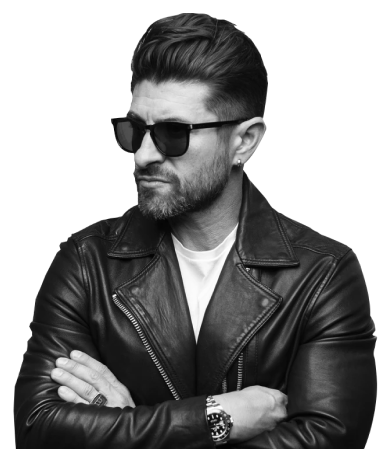 As most of us know, not all suit jackets, sport jackets, and blazers are created equal. Today’s jackets offer an assortment of features that give them distinctiveness and diversity; providing choices that promote the wearer’s individuality.
As most of us know, not all suit jackets, sport jackets, and blazers are created equal. Today’s jackets offer an assortment of features that give them distinctiveness and diversity; providing choices that promote the wearer’s individuality.
Although there are basic style rules that apply to each type of jacket, the range of features add variety and personality to one of our wardrobe staples. This article takes a look at jacket components and their available style options, in order to help you make your best choices.
Before we get started, here’s a quick description of each jacket type
Suit jackets are jackets that come with a matching pair of pants, and are typically made of fine fabrics. Worn for formal occasions and business, suit jackets should only be worn with their intended pants. Length should be just long enough to cover your butt.
Blazers have a nautical background, and are less formal than a suit jacket, but more formal than a sport jacket. Not as popular as the sport jacket, blazers are a good “in between” jacket when a suit’s too formal and a sport coat’s too casual. This jacket should be worn with more dressy trousers. Length can be shorter than a suit jacket, but, only by a couple inches, if at all.
Sport jackets came about to accommodate the gentleman sportsman – hunters while out in the field, and tennis players who wanted to look debonair while sitting around the club house. As a result, it is not formal, and depending on the designer, comes with an assortment of style features that give it character and make it a fun jacket to wear. Length, like the blazer, can be shorter than a suit jacket, but, again, not by much.
Now, let’s start at the top and discuss the different components and their various features.
There are three basic lapel styles most commonly worn: notch, peak, and shawl. The purpose of a lapel is to connect the jacket to the collar.
- Notch lapels are the most common lapel, and are found on every jacket style except formal wear, such as tuxedos. Notch angles do vary, but usually only on custom made jackets. Otherwise, the notch angle is standard on off-the-rack jackets. If you only have one suit, I suggest it have a notch collar, which will make it a more versatile suit than suits with the next lapel option.
- Peak lapels take second place to notch lapels, and are typically found on more formal jackets. Considered more stylish than a notch lapel; peaks are always seen on double-breasted jackets and some blazers. Peak lapel styles do vary in size; with narrower, more conservative lapels being in style today, as opposed to the wide, flashy ones of yesteryear.
- Shawl collars are round, thin, have no notch, and are seen only on formal jackets. Think silk smoking jackets and some tuxedos. Other than wearing a smoking jacket around the house – does anyone still wear them? – I recommend heavy set guys with full faces and necks avoid shawl collars because the roundness of this collar will make you look rounder. Choosing jackets with a peak collar will compliment the full face with contrasting angles.
Breasts: No, not that kind… single or double! This, as I’m sure you all know, refers to the style of how the jacket buttons or closes. Suits come in either style; although double-breasted suits are considered dressier and more formal than single-breasted.
- Single-breasted jackets are the most common jackets worn today; whether it’s a suit, blazer, or sport jacket. Sport jackets should only be single-breasted. Any man can wear this style, regardless of his size or build. The majority of single-breasted jackets have either two or three buttons; however, jackets can be found with one, four, five, and six buttons. Jackets with only one button are formal jackets, and those with four or more are specialty jackets that are rarely worn… ever since the Beatles broke up! Heavy set guys look best in jackets with three buttons, since three are more elongating and will give a taller, slimmer appearance. Although three buttons are elongating, shorter men do best with two buttons because two offer balance, where three buttons would make your torso appear too long. Tall, thin men can wear either; with my preference being three.
- Double-breasted jackets are definitely sharp and very fashion forward; however, they do have some limitations. If you’re heavy set or short, keep on walkin! The guy who can wear a double is very fit, does not have a large middle, and is at least medium height – let’s say over 5′ 7″. The reason he needs to be fit and trim is because this style jacket is very form fitting. Double-breasted jackets are normally seen as suit jackets and often blazers, but never on sport jackets. The style is a more formal one than single-breasted, and since sport coats are never formal, they shouldn’t have two rows of buttons. Speaking of buttons, this style comes in both two and three row varieties – totaling four or six buttons. Apply the same rule as single-breast jackets: shorter guys opt for two rows, and taller guys can wear three… or not. Double-breasteds always have peak lapels; which adds to the suit or blazer being more formal. As a result, this style limits when and where you can wear it. It’s a great look; however, because it has its limits, it’s smart not to buy one if it will be your only suit – since it’s not as versatile as a single-breasted suit. Nevertheless, if you have several single-breasted suits, by all means, add a double for variety’s sake. When blazers are double-breasted, dressy pants should be worn to keep a more formal theme.
Vents: Originally designed to give the wearer more room to move easily and not be as restricted; vents, or openings in the back of a jacket, still play that role in today’s modern jackets. The three styles: single, double or ventless, although functional, seem to be more about personal preference than comfort. That’s not to say comfort isn’t a factor, but most men choose vents based on fashion. That being said, let’s get into more detail. Who knows… you may decide to try something different.
- Single vent, also known as the American vent, located on the back center seam, is the most popular style and most commonly seen. I wish I could give you a good reason why besides it’s easiest and cheapest to manufacturer, but I can’t. It’s basic and not as stylish as a double vent, but serves the purpose of opening up and giving more room when sitting and putting hands in pant pockets. Anyone can wear this style, and it’s especially smart for the guy with a large or high rear-end.
- Double vent, introduced by English fashion, is the most expensive vent because it requires more material and time to make, and as a result isn’t used as much as the single vent. The double-vent is typically found on more expensive and custom-made jackets and suits. Its design looks like a flap that’s centered on the back of the jacket, which is capable of being lifted up. Besides being a very sharp, classy style, double vents should not open when you put your hands in your pant pockets; giving better coverage of your butt, which is a big plus for those who tend to do it a lot. Speaking of butts; this isn’t a good style for anyone with a large, round backside because the vent will stick out. Because double vent jackets are often longer, they are a great choice for tall men. If you’re short, choose a shorter double-vent jacket, have one shortened by a tailor, or have it custom-made.
- Ventless, or jackets without vents, were designed by Italians and are very smooth and elegant with their unbroken lines. It’s safe to say most Italian suits are ventless because it’s a distinct style that’s synonymous with Italian suits. Fortunately, many non-Italian brands now offer this style, which can be found most anywhere. The main downside to ventless jackets is the wearer loses out on the extra mobility vents provide; making the jacket more restrictive and less functional. But sacrificing practicality in the name of fashion is nothing new! Just remember to take it off before sitting down. Ventless jackets are often a bit shorter than vented jackets; a style most advantageous for small or short, stocky men. The ventless jacket is usually more form-fitting, since it’s missing the vent, and results in giving the wearer the appearance of being thinner. They also make the short, stout guy seem taller because more leg shows. Smaller, thin guys, look great in this style, too, because it doesn’t overpower small frames like some jackets can. However, if you’re someone who keeps his hands in his trouser pockets all day, you might want to pass on this style, since it will bunch up, pull, and look nasty. Ventless jackets can be found in suits, blazers, and sport coats.
Pockets: Pockets are intended to be functional; giving the wearer a place to carry non-bulky, inconspicuous items. The descriptions below are what’s normally seen; however, the number of pockets can vary depending on the designer.
- Suit jackets normally have one flap pocket on each side of the hips, with a chest patch pocket for handkerchiefs. Some suits offer a ticket pocket, which is an extra flap pocket on top of the right hip pocket; intended for putting small things like tickets, receipts, and coins in. Suit pockets should be sewn shut when you purchase the suit. The reason is so pockets keep their shape while suits are tried on in the store. The pockets can be easily opened with a pair of scissors when you get the suit home.
- Blazers have three patch pockets as opposed to flaps – one on either hip, and a chest pocket – and in the single-breasted variety, the pockets often have two metallic buttons for closure.
- Sport coats typically have flap pockets and sometimes an extra ticket pocket on one side. They can also be found with additional pockets – originally intended for the hunter to carry his hunting gear in.
Buttons: Jackets normally come with complimentary buttons, both in color and style. However, that doesn’t always mean they’re the same color as the fabric. You can expect a suit to have matching buttons, but all bets are off when it comes to blazers and sport jackets. Blazers typically have very distinct, contrasting buttons that stand out – sporting that flamboyant flair that goes along with sailing and boating; often being brass. Sport coats, depending on the style and brand, can go either way. Often, they have metal, or cloth or leather covered buttons, but can easily have matching ones, as well. The fortunate thing about buttons is they never have to be a deal breaker, since they can be easily and cheaply replaced.
Choosing a jacket should not be based on taste alone.
Body type should be the most important consideration when choosing a suitable jacket. Once you know which styles look best on you, have fun selecting the different features.
Hopefully, you now have a better understanding of jacket components, their purpose, and optional features, and will keep this article in mind during your next shopping adventure. If all your jackets tend to look the same, don’t be afraid to mix it up, which will add diversity and character to your wardrobe. There’s a vast assortment of features to choose from, which make fashion statements all on their own. Sometimes, it’s all about the details… which not only applies to jackets, but our entire presentation.
by Aaron Marino












